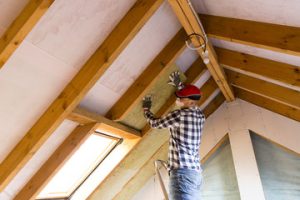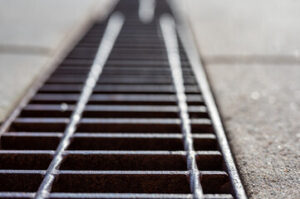Ceiling Insulation Perth is a cost effective and sustainable way to reduce energy usage. It also improves air quality and helps to lower ecological grievances.

It prevents the loss of heat through the ceiling by slowing down conductive, convective and radiant flow. Different types of insulation such as fibreglass, cellulose and rigid foam boards all have unique properties suited to specific climates.
Whether it’s a new or existing home, ceiling insulation is an effective way to reduce energy costs and improve indoor comfort. It is an affordable and low-risk investment, with long-term energy savings. It’s also an essential part of a sustainable building project, helping to minimise greenhouse gas emissions and energy consumption.
Without a good amount of ceiling insulation, your house can lose a lot of heat through the roof in winter and absorb too much heat in summer. This leads to the heating and cooling systems having to work harder in order to maintain comfortable temperatures, which results in higher power bills. By insulating your roof, you can prevent this from happening and save money on energy bills year-round.
Vaulted ceilings are particularly prone to heat loss, making it important to have adequate insulation installed in your roof space. When it comes to installing insulation, rubcorp can assist with both batts and blown-in solutions, depending on your specific needs. In most cases, the installation of insulation is simple and requires very little effort on your part. It can be done from inside the attic or from below, using access hatches to get into the rafters, eaves and collar beams as required. Ensure that the insulation does not come into contact with electrical wiring and keep it away from vents, exhausts and chimneys to avoid potential issues.
In addition to helping you save on your energy bills, effective insulation will help you reduce noise levels and keep your home a comfortable temperature all year round. It can also be beneficial if you’re looking to sell your property, as it will be more appealing to prospective buyers due to its energy-efficiency.
With energy prices rising, insulation is an excellent choice to reduce your carbon footprint and increase your savings. In addition to reducing energy costs, it also helps in reducing the demand on your heating and cooling system, which in turn cuts down on emissions and helps the environment. It is an essential feature of a modern house, so don’t delay in contacting rubcorp today to discuss your options for a more environmentally friendly, comfortable and sustainable building.
Increases Comfort
Insulation helps maintain a comfortable indoor temperature all year round, reducing energy consumption and saving you money. It also promotes sustainability and provides a healthy living environment. It has soundproofing properties as well, making it a great choice for residential homes.
Often overlooked, ceiling insulation makes a huge difference to the comfort and performance of your home or building. It is the easiest way to reduce your heating and cooling costs and create a more sustainable and comfortable living space.
Without proper insulation, up to 40% of your home’s heat can escape through the ceiling and roof. It can also cause your HVAC system to work overtime, which drives up energy bills. Insulation acts as a barrier against heat loss, trapping warm air inside in winter and keeping unwanted heat out during summer. This can save you up to 25% of your energy costs and improve your overall energy efficiency.
In addition to improving the energy efficiency of your home, insulation can increase the value of your property. Home buyers are looking for a well-insulated home with lower energy costs and comfortable indoor temperatures. It can be a real selling point for potential buyers, so it’s worth the investment.
It is recommended that you insulate your home at least once every ten years to ensure it remains effective. Regular checks can help prevent the build up of dirt or mould which can decrease its effectiveness, and it can help you catch any issues early on.
There are many types of insulation to choose from, and the best type for your home will depend on the climate, the design of your house, and the budget. Common materials include fibreglass, cellulose, and spray foam. The best type for your home will be determined by an expert who can advise you based on your situation.
If you are building a new home or undertaking significant renovations, it’s a good idea to insulate your ceiling during this phase. This will make it easier to access the area, and it can be installed more quickly and efficiently. It’s also the best time to insulate, as it avoids harsh weather conditions and can help you save on energy costs in the future.
Reduces Pollution
Insulation helps reduce the amount of pollutants that enter your home, particularly those from outdoor sources. Typically, insulation materials seal gaps and cracks which can be entry points for airborne contaminants, as well as reducing noise from outside and between different levels within your home. Insulation is particularly effective at reducing noise pollution due to its ability to dampen and absorb sound waves.
The primary way that insulation improves indoor air quality is by minimizing the need for excessive heating and cooling, which cuts down on airborne contaminants like carbon dioxide (CO2). In addition to lowering energy consumption, insulated homes are also less likely to retain moisture, reducing condensation and the formation of mold and mildew. This is especially important in humid climates, where microbial growth can trigger allergies and respiratory issues.
Additionally, insulating your home prevents the transfer of heat between the inside and outside environments, which can further reduce CO2 emissions. Choosing an environmentally friendly insulation option, such as polyiso, that has high R-value per inch, further minimizes emissions and promotes greater energy efficiency.
Lastly, insulating your home with non-toxic options further minimizes environmental impact and prioritizes health. Look for sustainable solutions that are free from harmful chemicals, formaldehyde, and volatile organic compounds (VOCs), which have been linked to poor respiratory health. In addition, opt for insulation materials that are naturally resistant to microbial growth and are mold and mildew-free.
Energy savings, improved comfort, and reduced pollution — all from one simple, inexpensive solution: ceiling insulation. By limiting the transfer of thermal energy, insulating your home can significantly cut your energy costs and reduce the amount of CO2 emitted by power generation plants. Moreover, energy saving and emission reductions from insulation also align with worldwide policies for green construction and operation of buildings. Incentives and rebates are often available for those who choose eco-friendly insulation options. For even further ecological benefits, install ceiling insulation made from recycled or natural fibers. These options are not only more environmentally sustainable, but they’re healthier for your family as well!
Reduces Noise
A properly insulated home can help reduce the noise coming from rooms above or in other parts of your house. This is due to the fact that insulation helps block sound waves as they travel from room to room. It also prevents the transmission of outside sounds, such as traffic and construction noises. This makes it much quieter in your house and increases your privacy. This can be very beneficial if you have young children in the home. Insulation is affordable and can be installed by a professional, but it is best to get a high-quality insulation like spray foam.
Ceiling insulation acts as a thermal insulator to keep your living space warm in winter and cool in summer. This means that you don’t have to run your heating or cooling system as often. This can lead to significant savings in energy costs as well as reduced environmental impact.
Additionally, ceiling insulation can act as a sound barrier to prevent the transfer of unwanted noises between rooms. This can be especially important if you have a family member who is a light sleeper or you live in a noisy area.
Many different types of insulation can help reduce noise, but spray foam is considered one of the most effective. This type of insulation expands to fill all gaps and crevices, creating an airtight seal. This can significantly reduce noises from the ceiling and throughout the home.
Other types of insulation, such as fiberglass batt insulation, are also good at reducing noises. They come in pre-cut and ready to install rolls or panels, making them an easy DIY option. They are also made of fire-resistant materials, adding another layer of safety to your home.
Installing new insulation is a smart financial decision for homeowners and businesses alike. Not only does it save money on your energy bills, but it can also increase your property value and make the home more comfortable to live in. For these reasons, it is essential that all homes and buildings are adequately insulated. Contact us to learn more about how ceiling insulation can benefit your home or business.


